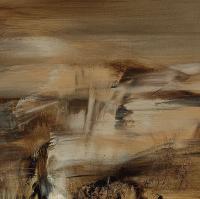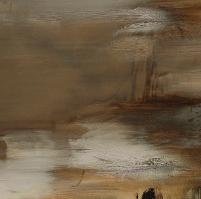
8 minute read
The Rise of Chinese Art Art


Advertisement

Zao Wou-Ki’s 29.01.64 which established a world auction record price for an oil painting by any Asian artist, achieving $26.1 million. © Christi e’s
Highlights included the re-opening of the Sir Joseph Hotung Gallery of China and South Asia at the Briti sh Museum, by Her Majesty The Queen, a gallery she fi rst unveiled in 1992. A keen rider and horse lover herself, she was seen marvelling at horse statues from the Tang Dynasty, and was equally enthralled exploring Sir Joseph Hotung’s extensive jades collecti on on loan to the museum. The gallery now features new displays telling the stories of China and South Asian countries from 5000 BC to the present day, lending heightened visibility to Asian art within the Briti sh Museum, the UK’s number one visitor att racti on.
It is a parti cularly ripe moment in the global art world for the Chinese art and anti que market. The Art Basel and UBS Global Art Market Reports indicates that in the past year, aucti on sales in China account for 34% of the world total by value, exceeding the US, which recorded 32%, and Britain, which has 18%.
Demand outweighs supply Many works of Chinese art were disseminated across the world by missionaries and travelers without recogniti on of their value, resulti ng in extraordinarily rich provenance. The Cultural Revoluti on’s destructi ve impact on many historic arti facts coupled with the overall delicacy of Chinese art materials means that well-preserved and authenti c anti ques are increasingly diffi cult to fi nd. Since 2002, the Law of the People’s Republic of China on the Protecti on of Cultural Relics allows the lawful circulati on of cultural relics bought in aucti on, helping overseas artwork to return to China and to become the most coveted items in the domesti c aucti on market.
Record prices at aucti on The majority of Chinese art sales take place at open aucti ons (circa 68% by value), with aucti ons of Chinese anti ques selling valuable Chinese painti ngs, jade, furniture and porcelains to Chinese audiences who appreciate the heritage and history of these objects. Despite global aucti on sales of Chinese art and anti ques slipping 5% in 2016, totalling $6.7 billion, the top end of the market with lots above $1.5 million reaching a 29% market share in 2016 -- more than double the total two years ago (Anti ques Trade Gazett e). Record prices at aucti on have lead most art professionals to strongly believe that the Chinese market is here to stay and is overall very lucrati ve.
Furthermore, few people are aware that the biggestselling modern / contemporary arti st at aucti on is Chinese modernist painter Zhang Daqian, who First wave While six of the ten top aucti on houses are Chinese, the Chinese art aucti on market is not yet as mature as that of the US and Europe, with industry leaders no more than 25 years old. There is a need for Chinese aucti on houses to become more globalised to enhance their positi oning within these dominant markets. A crucial step in this is Chinese aucti on houses broadening their domesti c brand infl uence and business presence to the internati onal art world.
Duton’s (established 1999) is part of the fi rst wave of Chinese aucti on houses and is a prime example of a forward thinking art business. Duton’s Chairman, Mr. Du, a leading voice for Chinese art and anti quiti es, was vastly ahead of his contemporaries with his vision and long-term commitment to expanding his aucti on house into the UK. The company launched Asian Art in London with a private exhibiti on for their dedicated collector base who trusts Duton’s masterful sourcing of works and their business integrity. Duton’s Chinese collectors based overseas are able to appreciate the scarcity of certain rare art forms, such as Ming and Qing Dynasty porcelains, and will pay sky-high prices to secure them. in London with a private exhibiti on for their dedicated collector base who trusts Duton’s masterful sourcing of works and their business integrity. Duton’s Chinese collectors based overseas are able to appreciate the scarcity of certain rare art forms, such as Ming and Qing Dynasty porcelains, and will pay sky-high prices to secure them.


Navigati ng opportunity Historical Chinese objects have long held a prominent positi on in the UK’s top arti sti c insti tuti ons, but Asian Art in London provides savvy collectors with the unique opportunity to build their own comparably signifi cant archives. Navigati ng opportunity Historical Chinese objects have long held a prominent positi on in the UK’s top arti sti c insti tuti ons, but Asian Art in London provides savvy collectors with the unique opportunity to build their own comparably signifi cant archives.
Chinese art can be both daunti ng and deeply rewarding to collect. Examining the conditi on and provenance of the work is as important as analyzing the quality of the piece, and most domesti c aucti on houses in China don’t have guarantees of authenti city. Moreover, the cost of authenti cati on is fostering a disappearance of certain art and anti que categories enti rely. Jade oft en costs more to authenti cate than it commands at aucti on, a burden many art businesses choose not to bear. Chinese art can be both daunti ng and deeply rewarding to collect. Examining the conditi on and provenance of the work is as important as analyzing the quality of the piece, and most domesti c aucti on houses in China don’t have guarantees of authenti city. Moreover, the cost of authenti cati on is fostering a disappearance of certain art and anti que categories enti rely. Jade oft en costs more to authenti cate than it commands at aucti on, a burden many art businesses choose not to bear.
China has prompted displays of poor practi ce, such as swindles in salesrooms with false bidders pushing up prices. Similar issues have been seen in more established markets, and improve with ti me as domesti c businesses develop bett er checks and balances. Pricing transparency is made more and more possible every day thanks to professional news providers such as Artron.net, Hurun, YangGallery. com and others. So too, increased competi ti on, such as Poly Internati onal Aucti on of China’s Poly Group, a $40 billion state-owned conglomerate, enhances transparency.
The prevalence of Asian art experti se in London, with over fi ft y dealers specialising in Chinese art, Islamic and Middle Eastern art, Indian art, Southeast Asian art, Himalayan and Central Asian art, Japanese art, Korean art, Vietnamese art, export art and contemporary art, provides an opportunity for collectors to build relati onships with trusted dealers who can guide them towards creati ng a deep collecti on of culturally signifi cant art objects. Take for example the exemplary private collecti on of US fi lm and television agent, Norman Kurland, which debuted at Eskenazi in Mayfair this month.
The collecti on featured thirty-eight art objects dati ng from China’s Six Dynasti es period (220-581 AD), that were acquired primarily through the well-known gallerist. The collecti on includes rare examples of Buddhist sculpture from imperial cave temples such as Yungang and Gongxian;
unglazed burial fi gures from the Han Dynasty, China’s second empire, and earthenware fi gures from the Northern Wei Dynasty, an enriched period for fusion art prompted by the cultural diversity and exchange of ideas taking place along the Silk Road. Eastern works of enduring beauty and relevancy are now more and more central to the fabric of London’s art industry, providing advantageous access to European collectors in an otherwise competi ti ve internati onal landscape. them towards creati ng a deep collecti on of culturally signifi cant art objects. Take for example the exemplary private collecti on of US fi lm and television agent, Norman Kurland, which debuted at Eskenazi in Mayfair this month.
The collecti on featured thirty-eight art objects dati ng from China’s Six Dynasti es period (220-581 AD), that were acquired primarily through the well-known gallerist. The collecti on includes rare examples of Buddhist sculpture from imperial cave temples such as Yungang and Gongxian;
unglazed burial fi gures from the Han Dynasty, China’s second empire, and earthenware fi gures from the Northern Wei Dynasty, an enriched period for fusion art prompted by the cultural diversity and exchange of ideas taking place along the Silk Road. Eastern works of enduring beauty and relevancy are now more and more central to the fabric of London’s art industry, providing advantageous access to European collectors in an otherwise competi ti ve internati onal landscape.


Lauren Xandra is Managing Director of L&X, an arts and luxury marketi ng fi rm. Based between London and Zurich, she can be contacted at lauren@ lxconsultancy.com. Lauren Xandra Director of L&X, an arts and luxury marketi ng fi rm. Based between London and Zurich, she can be contacted at lauren@ lxconsultancy.com.
An exceptionaly rare large gure of a court lady from the Tang Dynasty.










